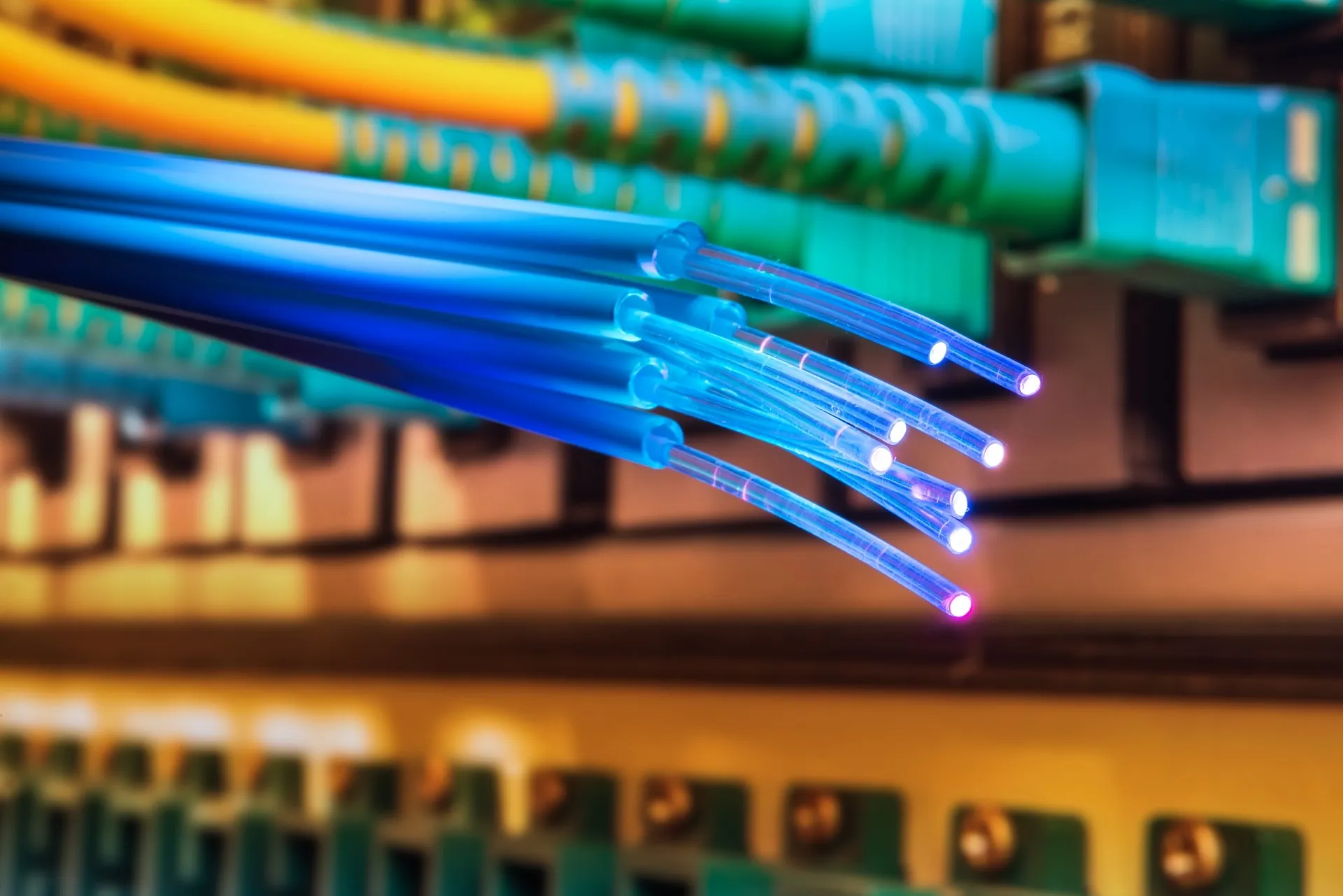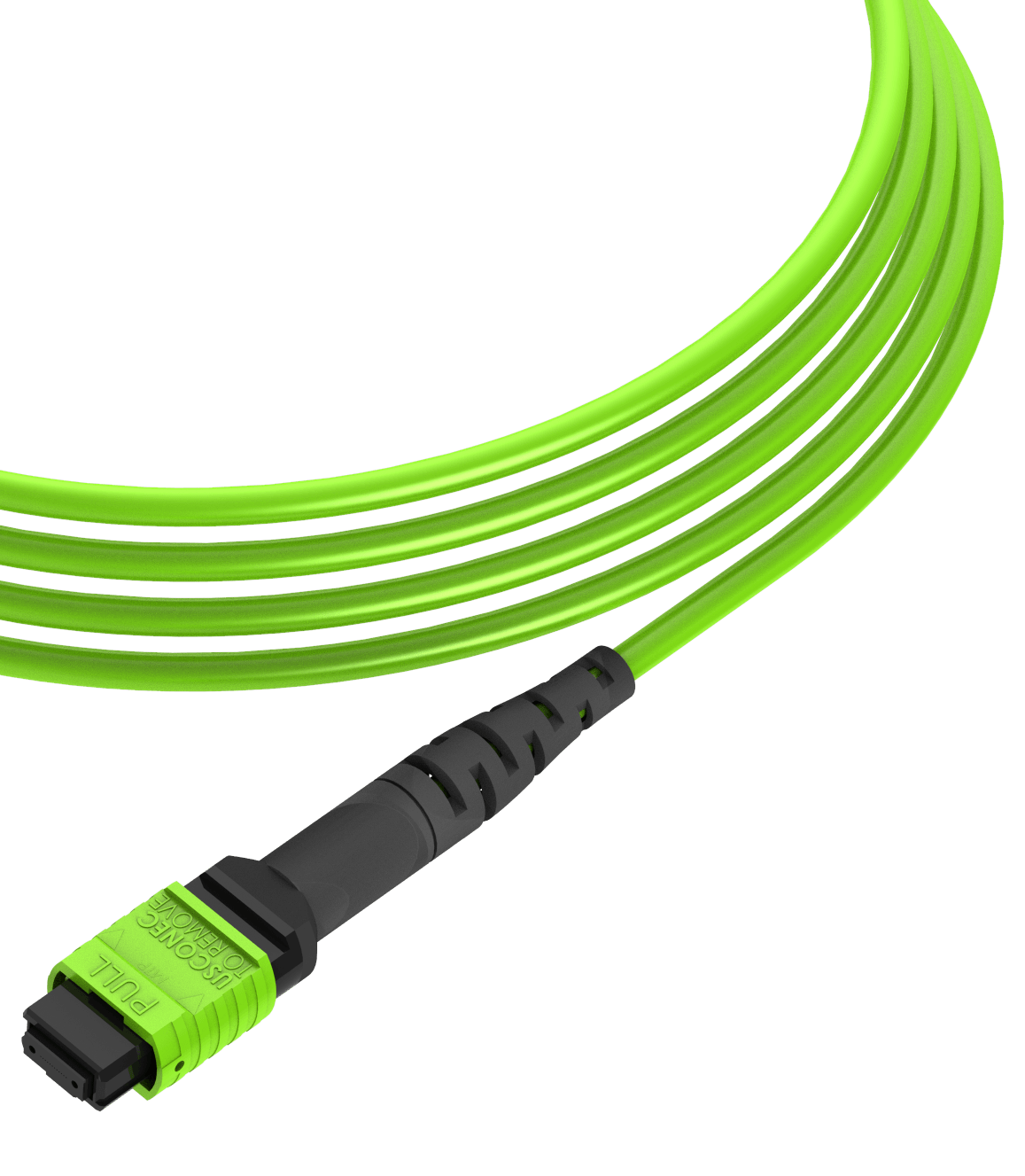NEWS
5 reasons to choose OM5 for your data center
According to Nielsen’s law of internet bandwidth, users' bandwidth grows by 50% per year (10% less than Moore's Law for computer speed). This new law appears to fit data from 1983 to 2019.
With this in mind, our infrastructures have to keep up with this throughput demand, which we can see when we look at our wireless networks for example. 5G is the fifth-generation wireless technology for digital cellular networks that began wide deployment in 2019.
5G network deployment, IoT and new IT applications are driving factors in increasing data throughput in our data centres, and will require high-bandwidth network infrastructure. With the cloud computing and web services continuing to drive bandwidth need, data rates grow from 10G, 40G to 100G and beyond in many data centre networks, which creates the need for development of new technology to manage the big data situation that we face today.
OM5 fibre is a next generation of multimode fibre. It is already a part of a standard.
OM5 fibre is designed to work over a wide range of wavelengths between 850 nm and 950 nm, which was not the case for OM1, OM2, OM3 and OM4. OM5 Supports shortwave wavelength division multiplexing (SWDM) technology which can reduce fibre counts in optical transmission
Here are the important things to know about OM5 and why you need it in your data centre:
1. Standards
ANSI/TIA-492AAAE, the new wideband multimode fiber standard, was approved for publication in June 2016 after a 20-month, industry-wide study carried out by a special TIA taskforce within TR-42.11 (Optical Systems Subcommittee) and TR-42.12 (Optical Fibers and Cables Subcommittee). The International Organization for Standardization/International Electrotechnical Commission (ISO/IEC) has recently decided on the nomenclature for wideband multimode fiber cable: OM5. This new fiber cable standard has already been referred to by the IEEE 802.3 working group for next-generation Ethernet standard development.
- Fiber: TIA-492AAAE (2016), IEC 60793-2-10 ed. 6 (1Q17)
- Cabling: ANSI/TIA-568.3-D (2016), ISO/IEC 11801 ed. 3 (4Q17)
- TIA has specified lime green as the official cable jacket color for OM5.
With OM5, you can rest assured that the reliability and quality is there to support the faster speeds and wider range of wavelengths.
2. SWDM
Shortwave wavelength division multiplexing (SWDM) is a technology that uses four wavelengths across the 850 to 950 nm range. SWDM transceivers were designed to use 2-fiber connectivity into the transceiver with OM5 multimode fiber. In 2015, the SWDM Alliance was formed by a group of transceiver, fiber and system vendors to develop a multisource agreement (MSA) for SWDM transceivers. Because OM5 wideband multimode fiber permits the use of a much wider wavelength range of 850nm to 953nm, it’s desirable to reduce fiber count by transmitting multiple VCSEL wavelengths in the same multimode fiber.
In a 40G layout, fiber optic technicians have to use one MTP fiber and 4 OM4 duplex fibers (total 8 fibers), which is obvious not preferable for high-density cabling networks. So by comparison with OM5 fiber, and utilizing SWDM technology, it is now reduced into 2 fibers (4×10G) in 40G networks, 2 fibers (4×25G) in 100G links.
In your data centre this represents and cost-saving in number of cables for the overall throughput capability, but also space-saving for tight environment’s.
3. OM5 Compatibility
In the main, 40G and 100G SWDM4 optical transceivers can be used with OM5 fiber. The SWDM4 transceiver uses a complex short wavelength division multiplex (SWDM) technology. Signals at four wavelengths (850nm, 880nm, 910nm and 940nm) are transmitted over one fiber. And only two fibers are required for bidirectional transmission. OM5 cable has the same fiber size of OM4 and OM3, which means OM5 is fully compatible with OM3 and OM4 fiber.
In other words, OM5 cabling supports all legacy applications in existing data centre infrastructures. If a service provider wants to use OM5 for a high speed environment, big changes will not be needed for existing cabling. OM5 cabling supports all legacy applications, and is fully compatible with OM3 and OM4 cabling.
4. Distance
Multimode cabling is often the first choice for short reach connections. As we know, OM4 patch cord can support link length up to 100m with 100G-SWDM4 transceivers, While OM5 can extend the reach to 150m with the same types of fiber optic transceivers, providing another better choice for data centre optimization.
5. OM5 Costs Impact
OM5 cabling will cost about 20-40% more than OM4. In addition, with the considerably declined costs of single-mode transceivers due to silicon photonics technologies and large hyper scale data centres buying in large volumes, more and more users will be prone to choose single-mode transceiver modules.
When it comes to data centre building, the cost is only one important parameter to consider. OM5 cable is beneficial for data centre deployments. Compared to single mode fibre cable (SMF), multimode fibre cable (MMF) is more cost-effective, because in most data centres, short reach connections are common.
However, OM5 provides optimal support of emerging SWDM applications which reduces the amount of fibres needed for high speed transmissions. Using OM5 will future-proof your installations for years to come.
To conclude, with the increase in demands for high bandwidth in data centre along with migration to multi-wavelength applications which operates over longer link distances, it is important to note that data centre operators should understand the use and benefits of OM5 fibre channel.
Anand Kumar, RCDD
Global Product Manager
RiT Tech (Intelligence Solutions) Ltd.





